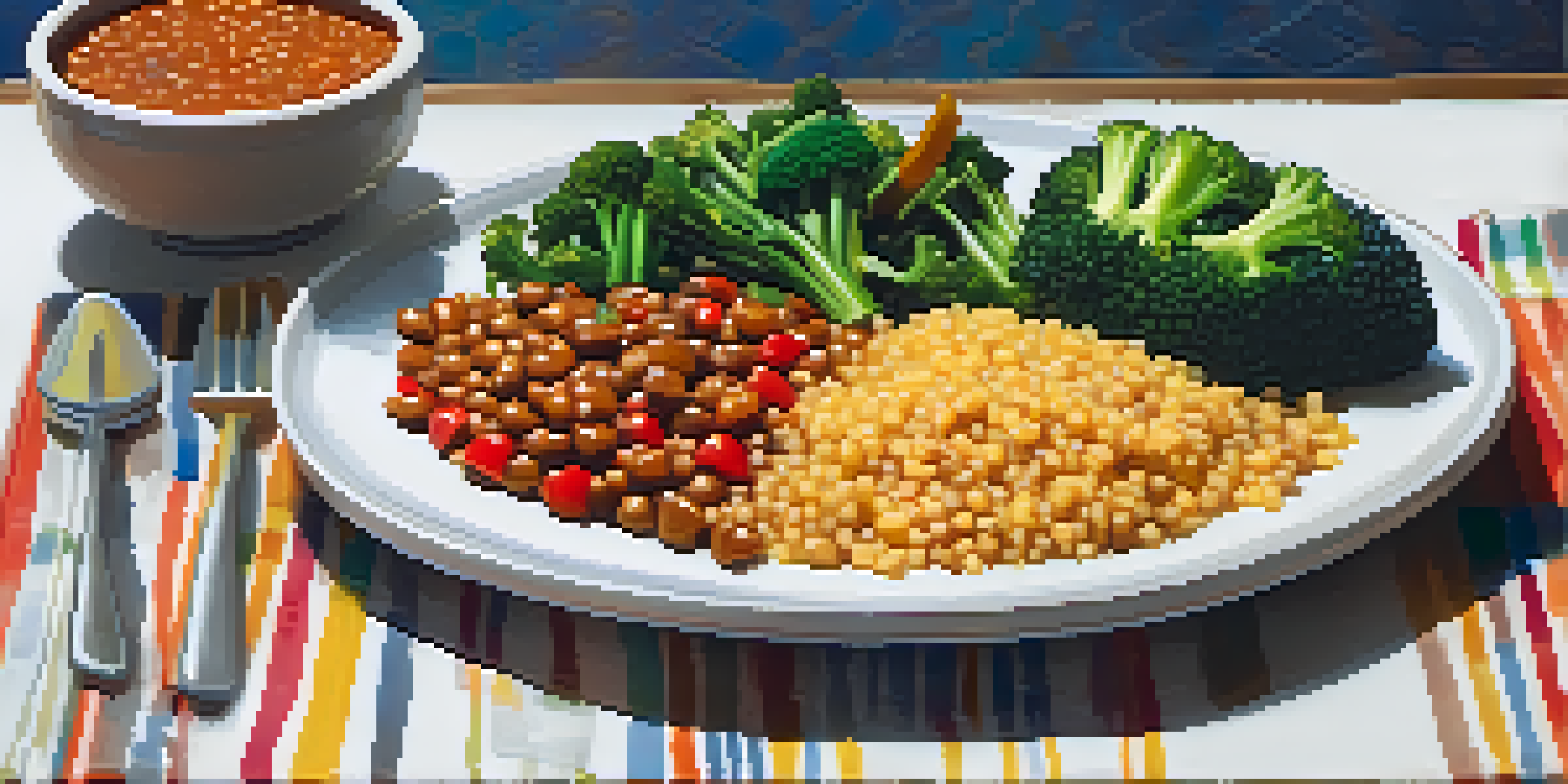Role of Fiber in Vegan Diet for Diabetes Management

Understanding Diabetes and Its Management
Diabetes is a chronic condition that affects how your body processes glucose, or blood sugar. Managing diabetes effectively is crucial to avoid complications such as heart disease and nerve damage. A well-balanced diet plays a significant role in regulating blood sugar levels, and many people are turning to plant-based diets for their health benefits.
The Power of Fiber in a Vegan Diet
Fiber is a type of carbohydrate that the body cannot digest, and it’s found in plant foods. It comes in two forms: soluble and insoluble, both of which play unique roles in health. Soluble fiber, found in foods like oats and beans, can help lower blood sugar levels, making it particularly beneficial for those with diabetes.
Diabetes Management Through Diet
A well-balanced, plant-based diet is crucial for regulating blood sugar levels and avoiding diabetes complications.
How Fiber Regulates Blood Sugar Levels
When you consume fiber, especially soluble fiber, it slows down the absorption of sugar into the bloodstream. This gradual process helps prevent spikes in blood sugar, which is vital for diabetes management. Additionally, fiber can improve insulin sensitivity, allowing the body to use sugar more effectively.
Incorporating High-Fiber Vegan Foods
To reap the benefits of fiber, consider incorporating high-fiber vegan foods into your meals. Foods such as lentils, chickpeas, quinoa, and a variety of fruits and vegetables are not only high in fiber but also packed with essential nutrients. A fiber-rich meal could be a hearty lentil stew served with a side of steamed broccoli.
Fiber's Role in Blood Sugar Control
Soluble fiber slows sugar absorption, preventing spikes in blood sugar and improving insulin sensitivity.
The Importance of Variety in Your Diet
Eating a variety of fiber-rich foods ensures you get both types of fiber and all the necessary vitamins and minerals. Variety keeps meals interesting and increases your chances of meeting your daily fiber requirements. Think of it like a colorful garden; the more diverse the plants, the healthier the ecosystem.
Potential Challenges of a High-Fiber Diet
While fiber has many benefits, transitioning to a high-fiber diet can come with challenges. Some people may experience digestive discomfort, such as bloating or gas, particularly if they increase their fiber intake too quickly. To avoid this, it's best to introduce fiber gradually and ensure adequate hydration.
Gradual Fiber Intake is Essential
To prevent digestive discomfort, it's important to gradually increase fiber intake and stay hydrated.
Monitoring and Adjusting Fiber Intake
It's important to monitor your blood sugar levels regularly when adjusting your fiber intake. Everyone’s body responds differently, so keeping a food diary can help you understand how specific foods impact your glucose levels. If you notice any significant changes, consider consulting a healthcare professional for personalized advice.
Conclusion: Fiber as a Cornerstone of Vegan Diabetes Management
Incorporating fiber into a vegan diet can be a powerful tool for managing diabetes. By choosing the right foods and maintaining a balanced diet, individuals can enjoy improved blood sugar control and overall health. Remember, the journey to better health is a marathon, not a sprint, so take it one meal at a time.